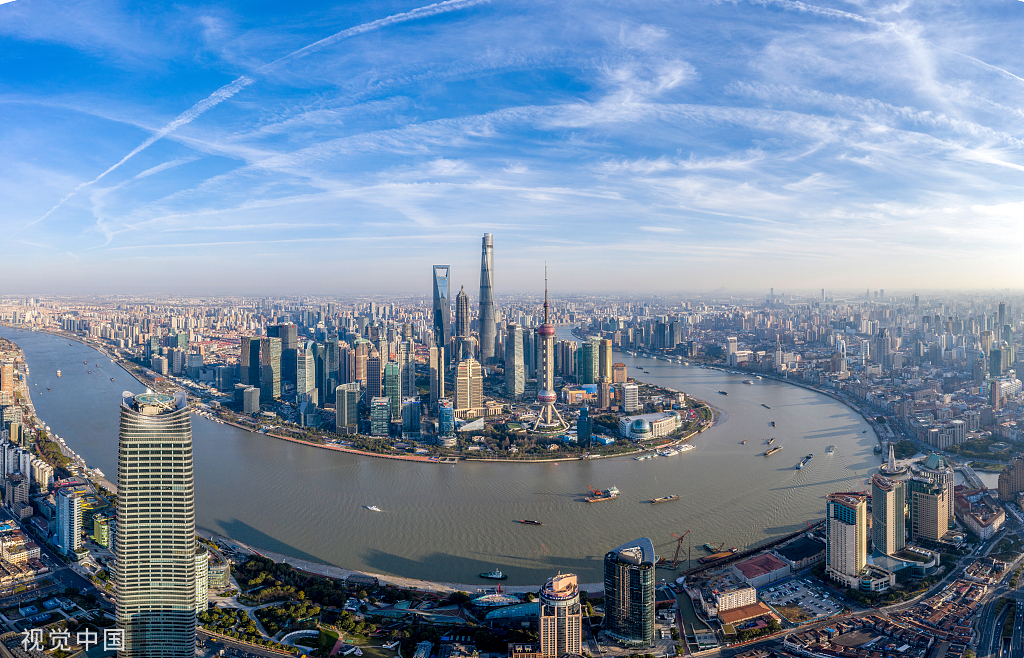China sets its sights on becoming a high-income economy
- By John Ross
 0 Comment(s)
0 Comment(s) Print
Print E-mail China.org.cn, November 5, 2020
E-mail China.org.cn, November 5, 2020

The press conference which followed the Fifth Plenary Session of the 19th CPC Central Committee put forward guidelines not only for China's next five-year plan, for 2021-2025, but also for more medium-term development of China up to 2035. The two are interrelated because the next five-year plan will inaugurate a qualitatively new period in China's economic development which is of global significance. This goes beyond the fact that China's short-term economic prospects are better than for any other major country, with the International Monetary Fund estimating it will account for 60% of global growth in 2020-2021.
In 2020, China became a "moderately prosperous" economy by its own national classification — also achieving its goal of eliminating absolute poverty. But most countries use World Bank classifications in making international comparisons — dividing economies into low, medium and high-income groups. By this criterion, China will enter the ranks of global "high-income economies" in the middle of the next five-year plan around the years 2022-2023. Therefore, as the press conference put it, a "new journey of building a modern socialist country in an all-round way will begin."
Aiming to achieve this new level of development determines the next five-year plan's nature. Previously, China planned for escaping underdevelopment, whereas this plan centers on the tasks of building a high-income economy. Furthermore, due to U.S. actions, it will do so in a different international context and where serious challenges face humanity — particularly climate change and economic recovery from the pandemic.
To understand this five-year plan's place in China's national development, the almost incredible nature of what has been achieved must be understood. In 1949, China was almost the world's poorest country — only 10 countries had lower per capita GDPs. Just 73 years later, the span of a single lifetime, China will count among the world's high-income economies.
Internationally, the scale of what is represented by the new plan is clearly understood by historical comparison. Today, by World Bank classification, only 16% of the world's population lives in high-income economies. But with 18% of the global population, China would more than double the proportion of those living in high-income economies. No such comparable single economic improvement has ever taken place in the whole of history.
This staggering achievement brings new challenges. Some are internal — a high income economy is far more complex than a low or medium one. But some are also external. The U.S. has embarked on an attempt to block China's development. This path was launched by President Donald Trump with tariffs and technology bans, and there is no indication that U.S. policy will fundamentally change in the short run.
This is what makes the much-discussed concept of a "dual circulation" economy so crucial in the new plan. Many U.S. analysts believe President Trump made a tactical error by attacking China: The tariffs were paid for by the U.S. population and the U.S. attacked China on terrain where it was strong — good quality medium technology manufacturing. Instead, it was argued, the U.S. should be concentrated on its strong points — high technology — weakening such Chinese companies as Huawei and TikTok, so as to create a "technology blockade" of China.
There are certainly doubts about whether the U.S. can achieve this goal — it is against the interests of other countries and its own high tech companies which previously had strong markets in China. But it would be a naive, unrealistic strategy for China to base its policy on an assumption that U.S. policy will collapse due to its own contradictions. Therefore, to progress as a high-income economy, China will have to increasingly rely on its own technology.
China remains committed to globalization, which is the best development path for the world, and uses every opportunity for internationalization, but in the new situation its domestic economy will dominate.
Obviously, this requires great national effort as money has to be poured into R&D, scientific research and producing new technology. Fortunately, China has the financial resources for this.
This issue overlaps with international problems which are not just due to U.S. policy but are also common problems of humanity and particularly climate change. In this regard, it is China's prowess in the field of renewable energy manufacturing technology that makes possible the meeting, and potential exceeding, of the goals of the Paris Climate Change accords.
China had outlined its goal of "ecological civilization" conceptually previously but global attention has been focused on its recent pledge of reaching peak carbon dioxide emissions before 2030 and achieving carbon neutrality before 2060. For example, Adam Tooze, one of the most eminent Western economic analysts and historians, noted in Foreign Policy magazine: "With those two short sentences China's leader may have redefined the future prospects for humanity."
To achieve these goals, they will have to begin to be embodied in the new Five-Year Plan and globally these will be among the most eagerly noted of its targets.
John Ross, Senior Fellow, Chongyang Institute for Financial Studies, Renmin University of China, is a columnist with China.org.cn. For more information please visit:
http://www.ccgp-fushun.com/opinion/johnross.htm
Opinion articles reflect the views of their authors, not necessarily those of China.org.cn.





